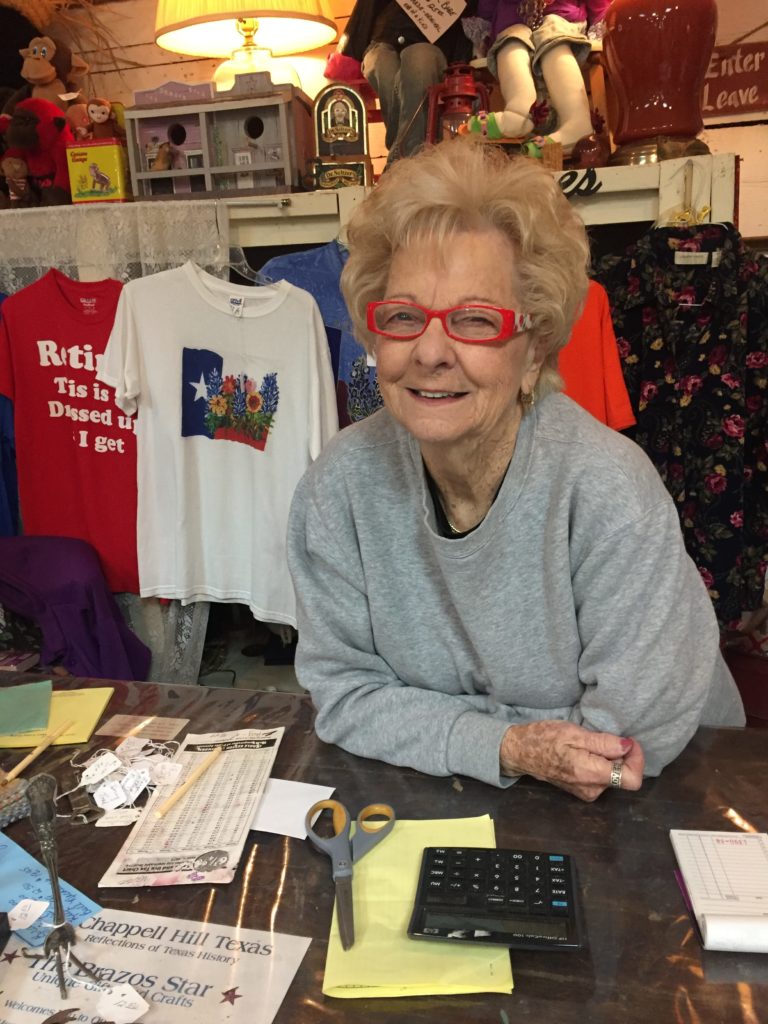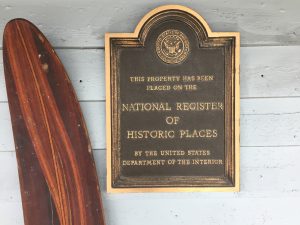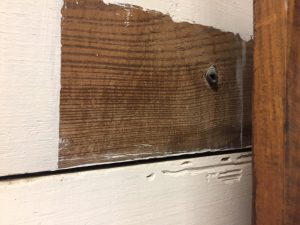Shooting the Breeze: Mary Louise Young

2025 Spring Antiques Show | March 20 – April 6
2025 Fall Antiques Show | October 4 – 18
Mary Louise Young is a moving target. The entrepreneur splits her time between her historic log home in Chappell Hill and Houston. She avoids Highway 290 whenever possible and scoots down the backroads in her Nissan 350z convertible. Fortunately, I caught her at the Brazos Star, the antiques and crafts store she owns and operates in Chappell Hill. It is housed in a circa 1860s former dance hall and saloon. It was Mary Louise’s weekend to work, so we visited in the midst of Saturday morning shoppers.
How did you discover Chappell Hill?
I drove past here with my family en route to see my grandparents in Lexington. [At this point, the conversation derailed as we held old home week.]
What prompted you to move here?
I worked for Brunswick and was a professional bowler. Then I owned bowling lanes and a sportswear store. In 1968, I decided I was going to retire, which is funny because I can’t even sit still. I told a man in Chappell Hill that I was looking for 50 acres and a one-room house.

He sent me a letter saying he’d found me a house, but it was in town. I took a look and was smitten. It was an historic house and I worked on it for 10 years. Then one Sunday I went for a drive. When I got back home, the fire department was pulling away. It burned to the ground.
I swore I wasn’t going to restore another old house, but the same man found me another historic house in Ellinger. I moved it over here. I slept in one of the sections when we stopped overnight en route, so nobody would throw a match in it and burn it down.
I finished that house and swore again I’d never restore another historic house. Never say never. I went to Anderson and bought the log cabin where Tapley Holland—the first man at the Alamo to step over the line in the sand drawn by William Travis—was raised. I moved it here and with some help chinked the logs myself. That’s where I live now.
Tell me about the Brazos Star.
I bought the building in 1969. The deal was too good to pass up, and somebody needed to save it. At one time, Chappell Hill had 14 saloons lining this street. People must’ve picked cotton all day and drank all night.
Initially, I had antiques on one side and a saloon on the other. I may be the only saloon owner in history who doesn’t drink beer, but I do like a good frozen margarita.
And the bullet in the wall?
I don’t know the whole story, but supposedly the outlaw Bill Longley frequented here. I’ve still got the wooden panels that you can put over the glass in the front doors in case of a gun fight.

Some people accuse me of putting that bullet there myself, but I had a man in here once who said, “I know you didn’t put that bullet in there because it’s an 1880 Colt blah-blah-blah.” I should’ve written down what he said.
When I got here, Chappell Hill was still a little wild. One day I was working and man came chasing his wife down the street with a gun. Fortunately, the sheriff got him before the man got her, but I thought, ‘Mary Louise, you may have made a mistake.’”
Why is it important that we save history?
In school, I didn’t like history because they made it boring. They just wanted us to memorize what date LaSalle went exploring. I started saving these buildings because I liked the challenge of it. Then I became intrigued by the history. Wouldn’t it be great if these walls could talk, so we’d really know what went on?
________________________________________________________________________
article and photos by Lorie A. Woodward
2025 Spring Antiques Show | March 20 – April 6
2025 Fall Antiques Show | October 4 – 18